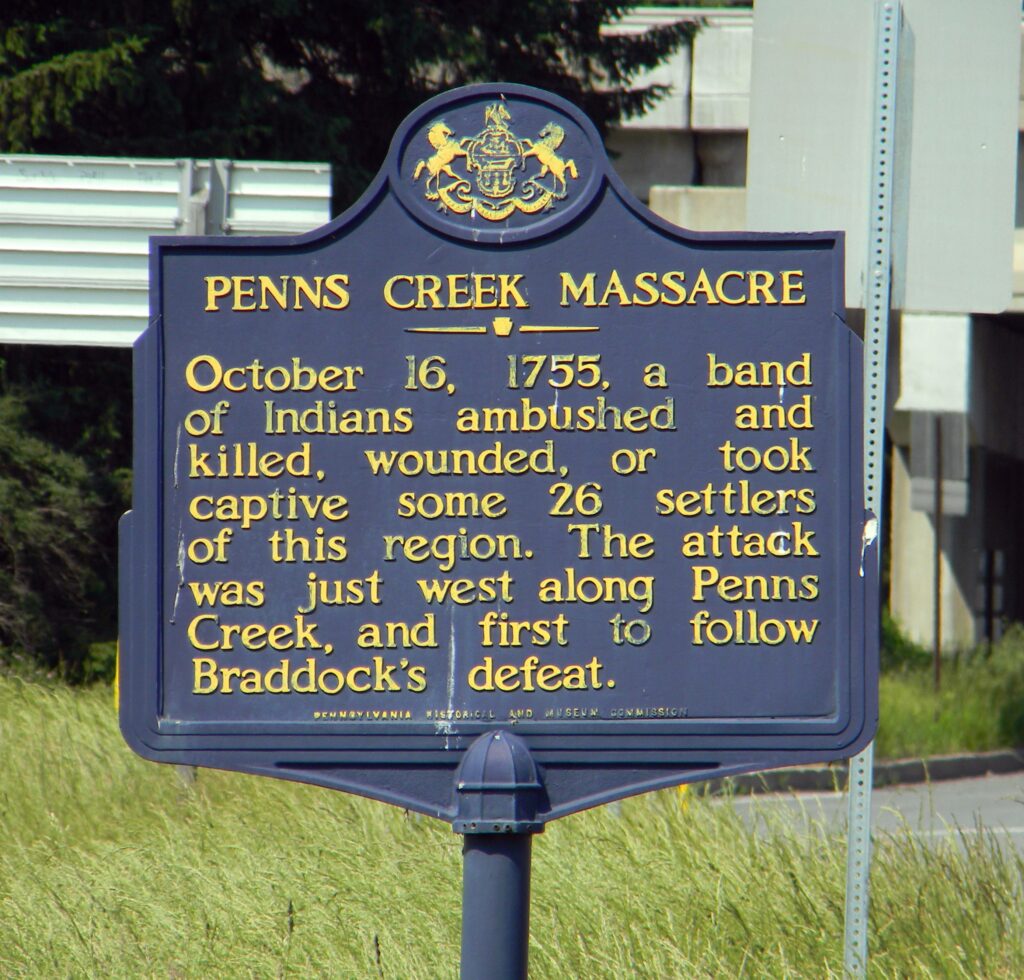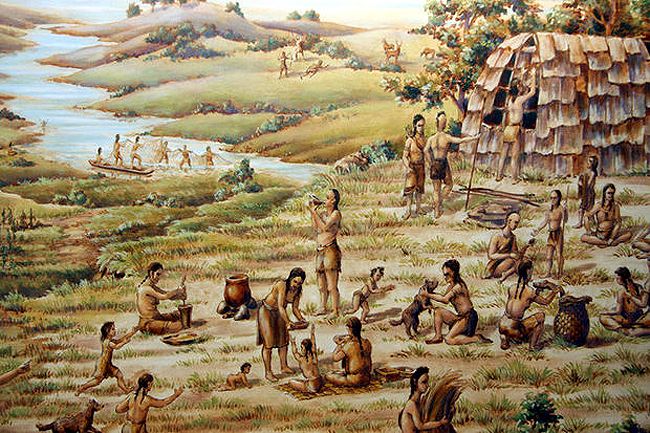Every September 17, Americans across the country observe Constitution Day, an opportunity to remember and celebrate the monumental task our founding fathers took on in 1787 to create a new form of government. During the Constitutional Convention in the summer of 1787, Pennsylvania sent eight delegates to Philadelphia who would attempt to craft the most important document in American history using their expertise and experience in a variety of fields.
While the battle for an effective governmental structure raged in the East, a very different conflict continued to cause strife in the wild wilderness of central Pennsylvania: the struggle between Native Americans and westward expansion.
Native Americans have existed in central Pennsylvania for thousands of years, with sites near modern-day Houserville dating back several thousand years. Centuries before European colonization along the East Coast, Native groups like the Lenape and Susquehannock thrived in the wilderness that was rich with with fish, game, and tillable soil. With the arrival of Europeans throughout the seventeenth century, changes had been forced on Native peoples. Tribes that were traditionally east of central Pennsylvania were forced from their homes by the increasing population of European immigrants. Clashes were common, but the results were the same. Eventually the frontline of those battles would make its way to the heart of the Appalachian Mountains.
By the mid-eighteenth century, conflict between Native Americans and Europeans, both French and British, were well documented. Many pushed for Great Britain or France to deal with the Native groups using direct force, but the European kingdoms responded by strategically constructing forts, likely defending themselves against each other as much as against Native attacks. At the onset of the French and Indian War, Native Americans all across America would be caught in the middle, forced to choose sides or face extinction.
Locally, the “Penns Creek Massacre,” as it would become known, occurred October 16, 1755. Lenape allied with the French, disgraced by another sale of land by the British-allied Iroquois, and conducted a raid on settlers living in the lands surrounding Penns Creek. The attack would spark Pennsylvania to form militia groups, abandoning the traditional Quaker precepts of peace. The response to the “massacre” was revenge, taken by British troops and their Iroquois allies. A vicious cycle of atrocities ensued.

Following Great Britain’s victory in the French and Indian War, it fell to England to solve the wilderness conflicts between settlers and Natives. The solution would prove to be controversial. In the 1768 Treaty of Fort Stanwix, Parliament decided to draw a line through the Appalachians separating the colonists and Native Americans, centering on the Susquehanna River and its tributaries. Native groups disagreed with England and each other on the position of such a line, with the Six Nations opting to protect their lands at the expense of the Lenape and Shawnee. For their compliance, the Iroquois League received the largest payment ever given to Native American tribes by the British government, worth over $2 million today. The boundary line did little to quell the tension.
As America moved closer to revolution, issues with Native tribes in central Pennsylvania and westward persisted. Following Captain James Potter’s expedition to now-Centre County, he and early Centre County inhabitant Reuben Haines took out land warrants for the area encompassing most of Penns Valley. This land, while technically on the colonists’ side of the treaty line, was disputed by the Lenape and Shawnee. The settlers who moved out to these plots were forced to run back east in both 1777 and 1778 in the “Great Runaways,” violent attacks by tribes attempting to send a message to the Pennsylvania government.
However, expansion would not stop. Settlers returned in greater numbers, eventually with detachments of militia following America’s victory in the revolution. The inevitable push westward following the Revolutionary War saw most Native Americans depart beyond Pittsburgh and into Ohio Country. By 1784, a new treaty, also signed at Fort Stanwix, finalized the forced removal of Native peoples from Pennsylvania. Those who chose to stay were forced to assimilate or remain peaceful in isolated communities and reservations. Today we celebrate Constitution Day on September 17 to memorialize one of our greatest accomplishments as a nation, as we should. It’s also worth remembering, however, that on October 22, 1784, the “Last Purchase” was made, effectively ending Native American habitation of Pennsylvania. The era of struggles between Pennsylvanian settlers and old Native tribes was at an end. Conflicts between Native Americans and the fledgling United States would continue for more than a century, encompassing nearly every state in the union. Just as it’s incredibly important to celebrate the successes of our past, it’s also imperative that we give recognition to more complicated dates in history. T&G
Local Historia is a passion for local history, community, and preservation. Its mission is to connect you with local history through engaging content and walking tours. Local Historia is owned by public historians Matt Maris and Dustin Elder, who co-author this column. For more, visit localhistoria.com.
Sources:
McDougal, S. (2017, November 21). Centre County’s Hatch Site – Pennsylvania Historic Preservation. Pennsylvania Historic Preservation – Blog of the Pennsylvania State Historic Preservation Office. https://pahistoricpreservation.com/centre-countys-hatch-site/
Native Americans. Centre County Historical Society. (n.d.). https://centrehistory.org/article/native-americans/
Penns Creek Massacre Historical Marker. Historical Marker. (2023, February 7). https://www.hmdb.org/m.asp?m=43293
U.S. Department of the Interior. (n.d.-a). 1768 Boundary Line Treaty of fort stanwix (U.S. National Park Service). National Parks Service. https://www.nps.gov/articles/000/1768-boundary-line-treaty-of-fort-stanwix.htm
U.S. Department of the Interior. (n.d.-b). American Indian Tribes Today. National Parks Service. https://www.nps.gov/cajo/learn/historyculture/american-indian-tribes-today.htm#:~:text=The%20original%20inhabitants%20of%20what,Jersey%20after%20the%20Europeans%20arrived.
U.S. Department of the Interior. (n.d.-c). Treaty and land transaction of 1784 (U.S. National Park Service). National Parks Service. https://www.nps.gov/articles/000/treaty-and-land-transaction-of-1784.htm




